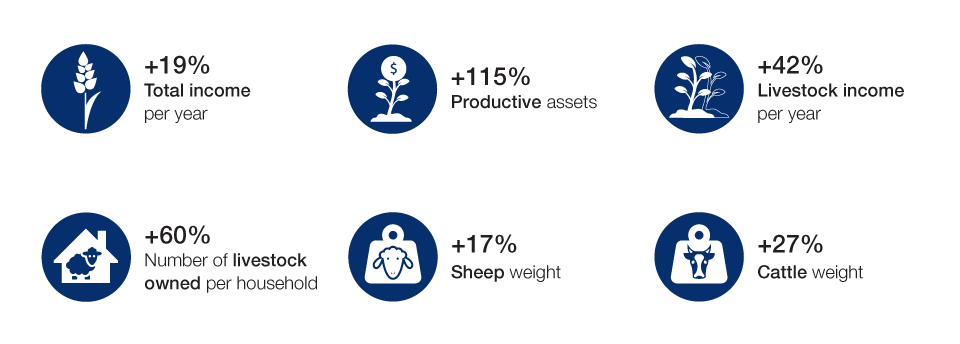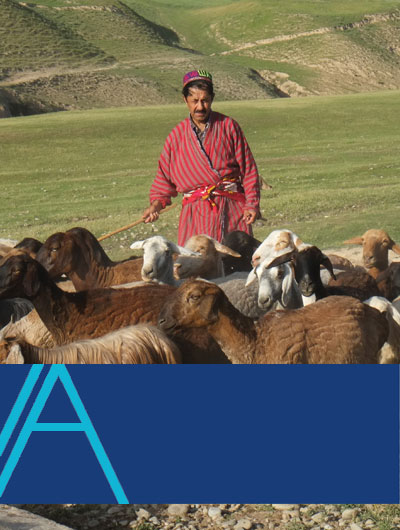Impact Assessment: Livestock and Pasture Development Project
Impact Assessment: Livestock and Pasture Development Project
In Khatlon Oblast, the poorest region of Tajikistan, decades of overgrazing has degraded pastoral land leading to low milk and meat production, food insecurity and malnutrition in rural areas. The Livestock and Pasture Development Project was implemented from 2011 to 2017 to improve the nutritional status and incomes of rural households by sustainably increasing livestock productivity.
The project established pasture user unions (PUUs) through which community members sustainably managed over 81,000 hectares of communal pasture land using rotational plans. Farmers received farming equipment and improved breeding rams to increase the productivity of their farms. They also received improved seed varieties so that they could grow sufficient animal feed.
Vulnerable households headed by women received starter packages of small ruminants, poultry and bees, and were trained in livestock care to strengthen their capacity to earn additional income. Water points and sheds for livestock were constructed and farmers got access to veterinary services.
IFAD conducted an ex-post impact assessment of the project, collecting qualitative and quantitative data from 2,400 households.
Key impact estimates
An impact estimate is calculated as the difference in mean outcomes between the treatment group (project participants) and the comparison group (non-participants).
The project reached almost 24,000 households in Khatlon Oblast, and resulted in significant increases in ownership of livestock and productive assets, such as sheds and shelters for animals.

Main lessons
This study draws the following insights for policy development and project implementation:
- In order to generate high impact, project activities should be inter-linked to complement each other in a synergistic way. In this project, better access to and reduced costs of water and farm equipment was complemented by the adoption of improved breeds and mating techniques to generate positive results.
- Pasture rotation plans can restore degraded pastureland, as shown by the positive although not significant increase in live vegetation cover in Khatlon. Geo-referencing during the second phase of the project would allow for better monitoring of the potential to mitigate greenhouse gas emissions linked to pasture rotation.
- Livestock productivity projects have the potential to contribute to the development of human capital in project areas by increasing school attendance rates among children between 6 and 15 years of age. These projects free up children's time previously spent on livestock rearing and water harvesting, and increase their families' available income to pay for school.
